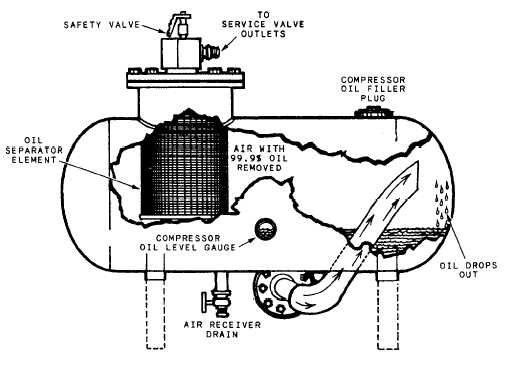that would require replacement, such as broken gaskets or dents that prevent sealing. One way to clean the filter is to use LOW - PRESSURE AIR, and blow the debris trapped in the filter against the direction of airflow from the inside to the outside (fig. 8-12). Never exceed pressures of 30 psi when using this method of cleaning, and never use this method of cleaning more than six times on the same filter. Another way you may clean the filter is to wash it with water and a mild detergent (fig. 8-13). This is useful if compressed air is unavailable or if the filter is clogged with grease or oily dirt. When you are using water, do not exceed water pressures of 40 psi.
WARNING
Gasoline or kerosene should never be used to clean air filter elements s it causes explosive fumes to collect in the air receiver.
Dry the filter and hold a bright light on the inside of it. Remember, concentrated light shining through the filter element indicates holes that require replacement of the filter. Following service to the air cleaning system, check and reset the air restriction indicator if required.
THE AIR RECEIVER
The air receiver is a welded steel tank installed on the discharge side of the compressor. It acts as an oil sump and a condensation chamber for the removal of oil and water vapors. It stores air during the operation to actuate the pressure control system. The oil separator element is in the tank; and on top, are the safety valve, automatic blow-down valve, and at least one outlet for a service valve. Figure 8-14 is an example of a typical air receiver-oil separator.
NOTE
Reciprocating air compressors do not require oil separators because oil is not circulated through the air system. NAVSEA approved reciprocating air compressors are the only systems used to compress air for diving operations.

Figure 8-14.-Typical air receiver/oil separator.
Continue Reading